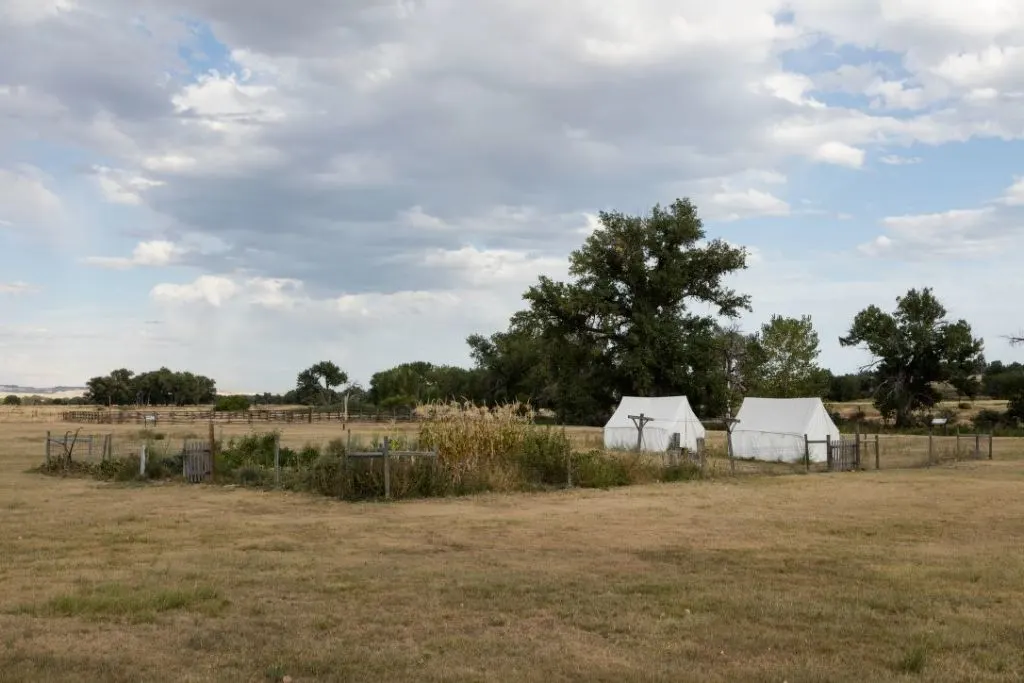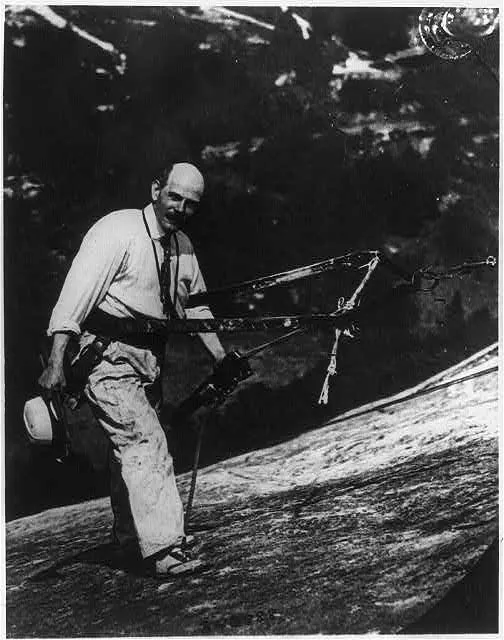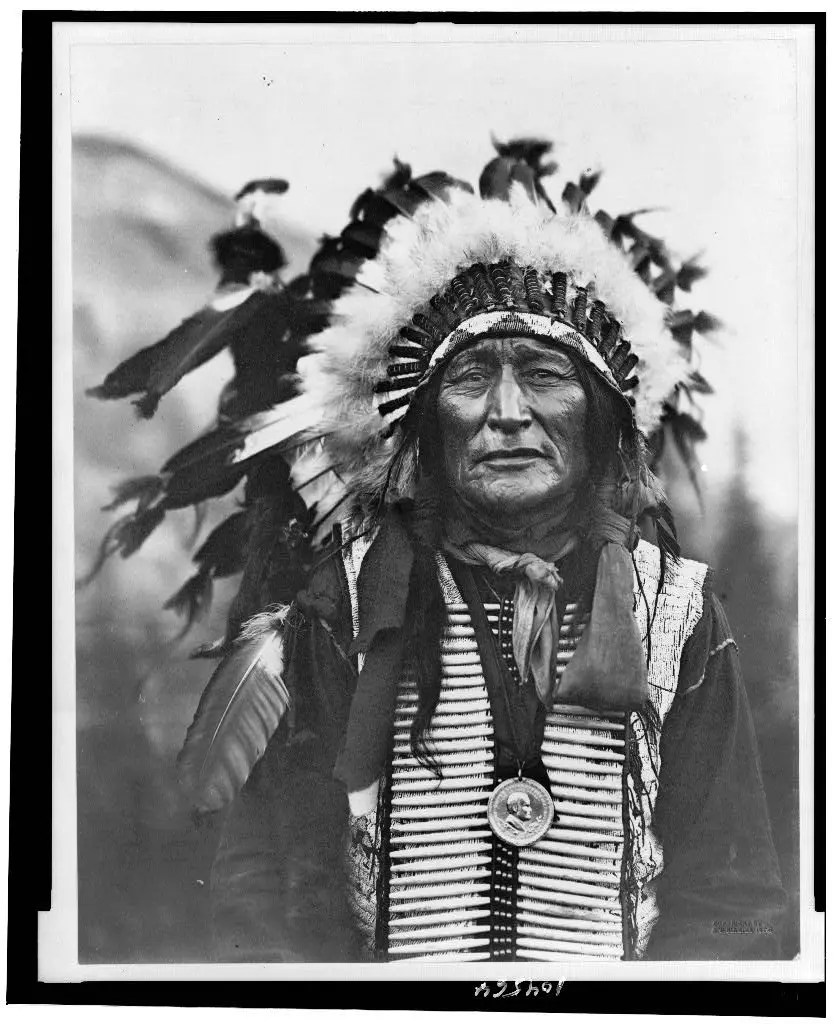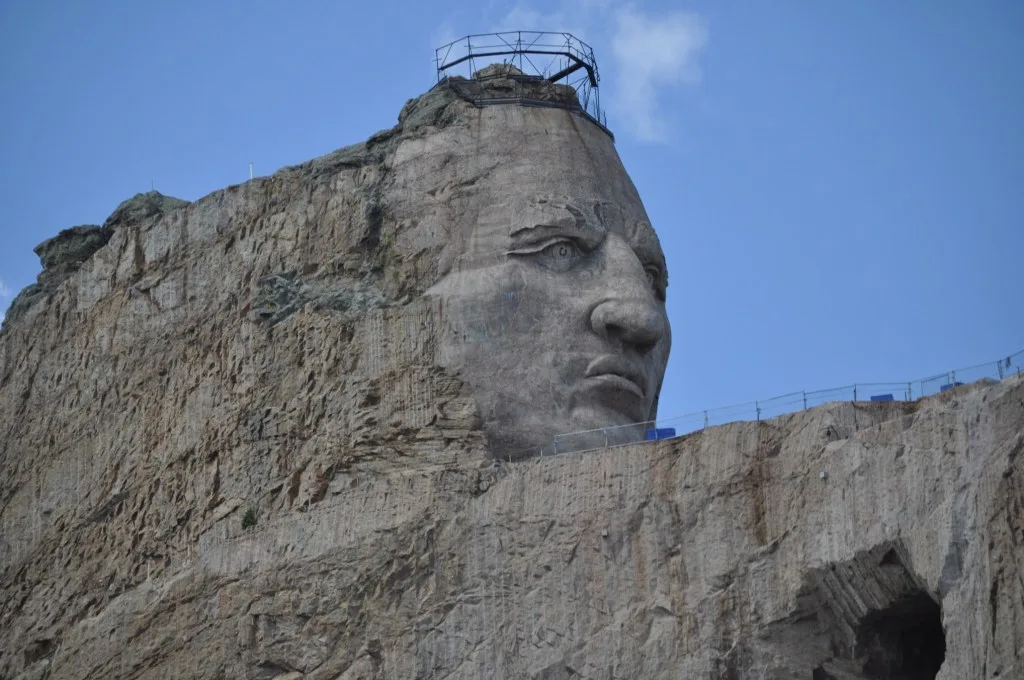What is the Mount Rushmore Controversy (and Why You Should Know)?
In the Black Hills of South Dakota, Mount Rushmore has been in the middle of controversy since its beginnings. But, why exactly?
We scoured the Internet to bring you more about the history of this national monument and why some consider it wrong.
Let’s dig in!
What is Mount Rushmore?
The Mount Rushmore that 3 million people visit each year is a monument built with U.S. patriotism in mind. The carved granite mountain contains the 60-foot tall faces of Presidents George Washington, Thomas Jefferson, Theodore Roosevelt, and Abraham Lincoln.
There’s more to it than that, though.

History of Mount Rushmore and the Black Hills
Long before Europeans came to the area, the Lakota people called the mountain “The Heart of Everything That Is.” It was a sacred place for prayer and a gathering spot for local tribes. People collected food and medicine there as well.
Later, the famous Black Elk had a vision and named it Tȟuŋkášila Šákpe, or Six Grandfathers Mountain. According to nativehope.org, the mountain represented “kindness and love, full of years and wisdom, like human grandfathers.”
In 1868, the U.S. government signed the Treaty of Fort Laramie, which gave the Lakota exclusive use of the Black Hills region. Note that word exclusive as it plays a part in what was to come. Initially, the soldiers at the fort helped keep settlers and miners off of the land.
However, all bets were off once gold was discovered there.

Broken Promises
The government fully broke the treaty in 1877 and turned a blind eye to the wave of miners and settlers coming to the land. In addition, they stopped sending the Lakota food rations and supplies they so desperately relied on now that they were restricted from their hunting grounds. The Lakota fought back, of course.
What would you do if someone tried to move into your house and kick you out?
Sitting Bull and Crazy Horse led the resistance, doing their best to protect their people and the land. The most famous of these battles was the defeat of General Custer. That battle, plus fears surrounding certain large ceremonial gatherings, made the U.S. Government retaliate in what is known as the Massacre at Wounded Knee.
Few warriors were killed that day in 1890 because they were out fighting smaller battles. Instead, soldiers murdered women, children, and elders. The Native men heard about the attack but returned too late to help.
Emotionally defeated, they effectively stopped fighting for the land to protect their remaining people.

About Mount Rushmore’s Sculptor
Over the next couple of decades, motor vehicles became more commonplace, bringing tourists to the Black Hills. Doane Robinson, a historian at the South Dakota State Historical Society, wanted to attract more sightseers. So, he envisioned carving the mountain with heroes of The West, such as Lewis and Clark and Red Cloud, a respected leader of the Lakota people.
And he knew just the man to create his dream – sculptor Gutzon Borglum.
Gutzon Borglum was the original sculptor for Stone Mountain in Georgia, an ode to the confederacy. There, Borglum was involved with the Ku Klux Klan, attending rallies and dabbling in their politics. In addition, the KKK funded the Stone Mountain project.
Some resources state the Stone Mountain Association fired Borglum for mismanaging funds and “his offensive egotism and his delusions of grandeur.” Others say he chose to leave for greener pastures. Either way, he began work on Mount Rushmore late in 1927, and his first order of business was to convince Doane Robinson that his idea of using the presidents was better, more patriotic.

Borglum and his team worked on the Rushmore project through his death in March of 1941. His son, Lincoln, then took over. However, they’d run into areas that weren’t carvable.
Plus funds had run out due to the U.S. involvement in World War II.
As a result, they officially announced the sculpture as completed on October 31, 1941.

The Secret Room
Borglum desired to create a Hall of Records, a museum of sorts where people could view patriotic and historical artifacts. He tunneled through Six Grandfathers Mountain to create the room. It was never completed, though, because of the early shutdown.
However, in 1998, the National Park Service placed a vault in the room and filled it with information about Mount Rushmore, the carved presidents, and U.S. history. Good luck getting in, though.
The secret room is not open to the public.
Learn More: The Smithsonian provides additional details about Borglum and the ‘Sordid History of Mount Rushmore.’
Mount Rushmore’s Controversy Continues
In the 1920s, the Lakota tribes sued the U.S. government for land theft. This new form of battle lasted for decades. In 1980, the U.S. Supreme Court ruled that the U.S. had unlawfully taken the Black Hills territory from the Lakota. The Court granted them $17.1 million in damages.
However, the Lakota declined and continue to push for the return of the land to their people.
Protests became part of the fight for the land in the 1970s and still happen at Mount Rushmore today as the Lakota and other Native peoples try to make the public aware of the issue.
But what about the destruction of their sacred mountain? That likely will never be resolved because there’s no way to return it to its natural state. Some of the local people want to add something that will support their history as well. Others want the faces destroyed.

Adding Insult to Injury
Beyond losing their sacred land and having it defaced, the Lakota now stare at the likenesses of men who thought of Indigenous people as unequal at best and not even human at worst.
Washington and Jefferson owned African slaves, and Washington ordered the destruction of numerous Native settlements gaining the nickname “Town Destroyer.” Jefferson also created policies that allowed the U.S. government to remove Native Americans from their lands.
Roosevelt has been famously quoted from one of his 1886 speeches, “I don’t go so far as to think that the only good Indians are the dead Indians, but I believe nine out of every 10 are.” He was intent on systematically removing Indigenous peoples from their lands.
And, Lincoln ordered the execution of 38 Dakota ‘rebels’, which is still the largest mass execution in U.S. history.
Yes, these presidents did some good while in office. However, they did terrifying and terrible things to the Native people of this country.
How Mount Rushmore Got Its Name
Charles Rushmore, a lawyer from New York, visited the area in 1884 to make a deal on a tin mine. As a joke, someone started calling Six Grandfathers Mountain, Mount Rushmore, and the name stuck.
Nearby Mount Rushmore Alternatives
We’re certainly not saying don’t go to Mount Rushmore. However, we want you to be aware of the controversy there. Whether you choose to go or not, these are a few options that make great alternatives or additions to your trip.
Crazy Horse
Crazy Horse is actually another controversial sculpture among the Lakota. Some feel it has defaced sacred land just as much as Mount Rushmore. Others, including Chief Henry Standing Bear who came up with the idea, think having a bigger, grander sculpture of one of their heroes will show they are still a strong people.
Carving began in 1948, and the sculptor Korczak Ziolkowski completed the face in 1998. The plan is to depict his whole body and part of his horse, but the project is low on funds. Still, sculpting continues today.
Either way, the property contains a magnificent museum housing hundreds of pieces of Lakota art and artifacts. Walking through the museum and watching the presentations is certainly an education. To tour the carving, you need to pay extra.
So you can decide for yourself if you want to support the project directly. That said, you can still view Crazy Horse from the visitor center and museum.

Tatanka: Story of the Bison
You may think it’s cheesy if you recall that Kevin Kostner wanted to create this after working on Dances with Wolves. However, Tatanka (or Ta’Tanka) truly is an honoring of the bison and the Lakota people.
You can walk the paved path to the 17 lifesize statues of bison being chased over a cliff by three Native hunters. Inside, Tatanka contains a gift shop and small museum with numerous Lakota artifacts and some items from Dances with Wolves.
Maybe most importantly, Lakota people give talks and presentations throughout the day at the Peoples Educational Interpretive Center. One moment, you’ll hold tools they used in the past (and present) while you hear how they were made and used.
The next session might be music or storytelling. Though small, you’ll learn much at this museum. In addition, the gift store features pieces made by local Lakota people and Native-owned companies.
The Badlands and Spearfish Canyon
View the land in its amazing natural state by taking the scenic drive through the Badlands National Park or Spearfish Canyon.
The Badlands Loop State Scenic Byway offers 35 miles of gorgeous canyons and buttes with incredible sunset views. And, with over 30 viewpoints, you’ll certainly get that perfect shot. Badlands National Park provides numerous hikes taking you farther into the canyons and rock formations. Be sure to bring a trail map, a small emergency kit, and plenty of water if you venture off the highway.
Spearfish Canyon Scenic Byway provides a 22-mile journey through the Black Hills forest along Spearfish Creek. Don’t plan to stay in your car, though.
You’ll want to stop off and explore some of the numerous waterfalls, such as Roughlock and Bridal Veil. Then grab a bite to eat near Cheyenne Crossing, check out the gift shop, or spend the day hiking the many trails.
The Mount Rushmore Controversy Lives On
Mount Rushmore is patriotic for some and a reminder of past horrors for others. The controversy surrounding it will likely never end, even if the Lakota people return to being caretakers (owners) of the land.
If you see a Native person working at the memorial, don’t be surprised. Many feel it’s a good way to educate visitors about all sides of history.
Have you been to Mount Rushmore or another controversial tourist attraction?
Discover the Best Free Camping Across the USA
To be honest with you, we hate paying for camping. There are so many free campsites in America (with complete privacy).
You should give it a try!
As a matter of fact, these free campsites are yours. Every time you pay federal taxes, you’re contributing to these lands.
Become a FREE CAMPING INSIDER and join the 100,000 campers who love to score the best site!
We’ll send you the 50 Best Free Campsites in the USA (one per state). Access the list by submitting your email below: